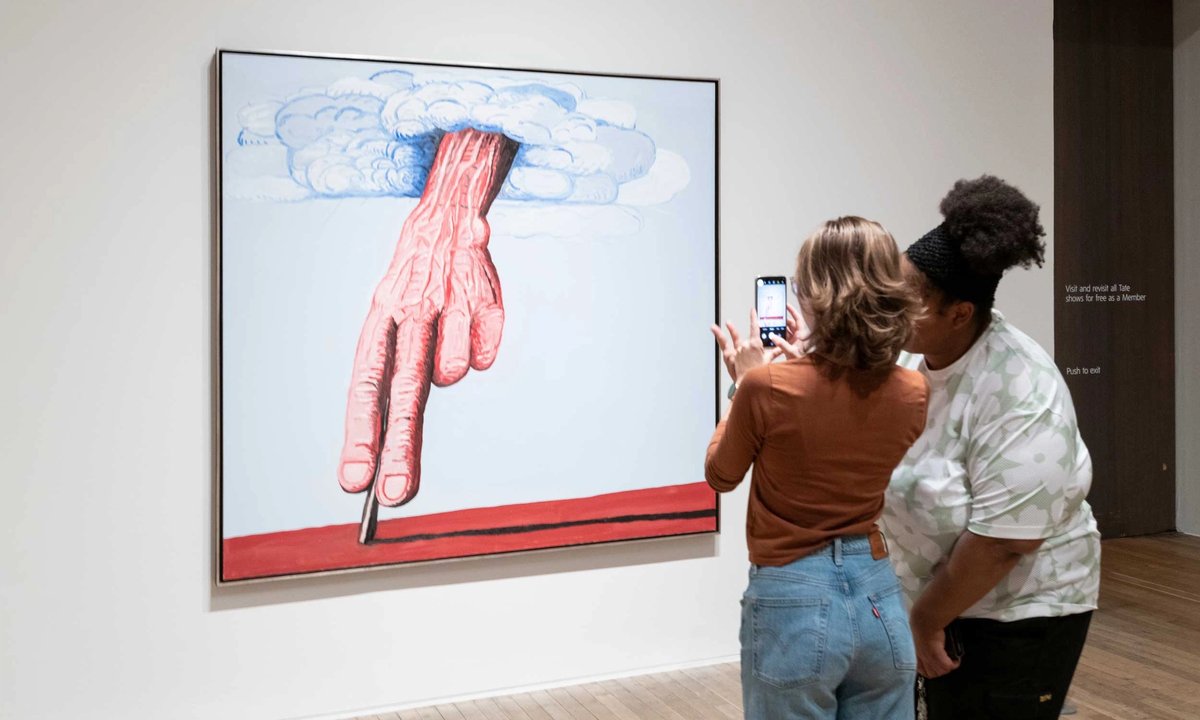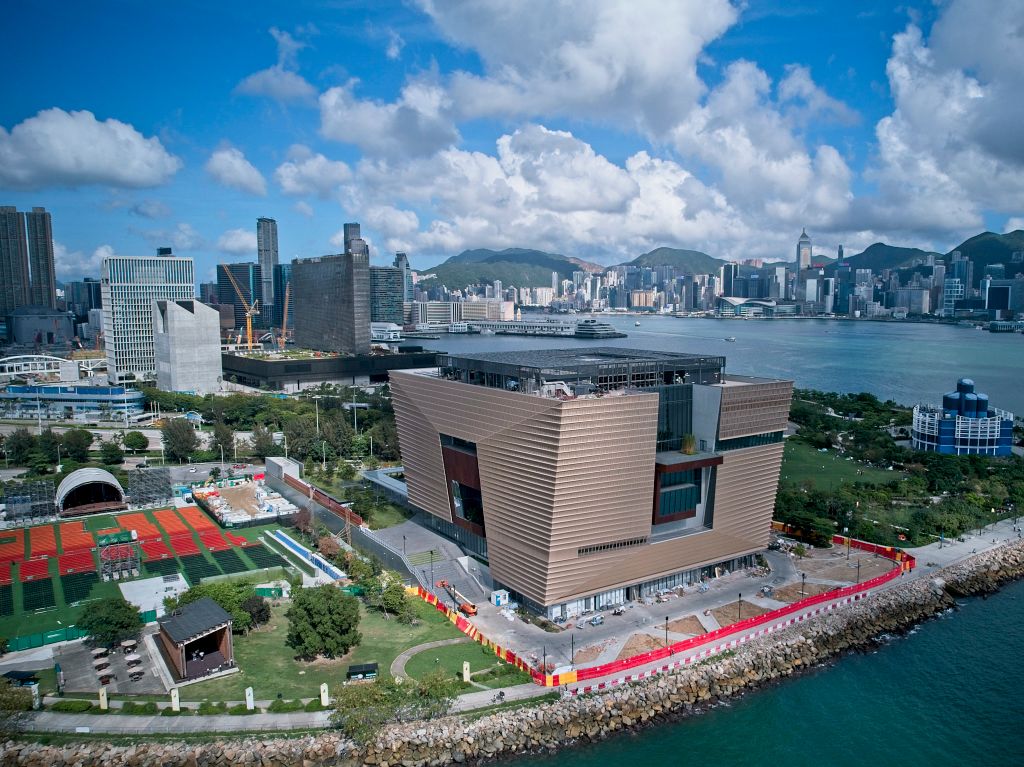The Tate Modern and Tate Britain welcomed around five million visitors in 2022, according to our Visitor Figures research. But Tate’s senior social media manager Nell Burnham reports that the museums recently hit a staggering 12.5 million followers on social media. They are united under the @tate handle and can be found on Instagram, TikTok, Facebook, Threads, LinkedIn and X (formerly known as Twitter), among others. In our annual survey of the most followed museums on social media, Tate has come out on top for the UK three years running, and third overall in the world. Here, we speak to Burnham about tackling TikTok, working with influencers and how Tate doubled its video views to 65 million in 2023.
The Art Newspaper: Tate is on so many social media platforms—how many people are on the social team and how do you manage it all?
Nell Burnham: Including me, we have three social media team members who run the @Tate accounts and then other channel holders who manage the other accounts (such as for Tate St Ives, Tate Liverpool, Tate Collective and so on) alongside other responsibilities as part of broader remits.
To maintain consistency across our outgoing content we touch base with all channel holders once a month to share best practice, inspiration and updates (and equally important—the occasional grumble about the unique challenges social media platforms sometimes pose!) Our visitor communications team also helps to manage incoming questions and comments, which lightens our load considerably.
Social media can be quite a high-pressure and fast-moving environment, so I’ve found it to be very important to check in with the team’s wellbeing, encourage us all to step away and take breaks and ensure we’re able to retain a sense of humour and perspective in our day-to-day work.
Which social media platform is Tate most focused on or considers the most important?
We are channelling more and more of our time and energy into building our audience on TikTok. Our brilliant Tate Collective membership offers £5 tickets to 16-25 year olds, and we know that TikTok is a key channel to reach these groups and engage them with our programme. However, we can’t throw the kitchen sink at TikTok just yet—there isn’t always rhyme or reason as to which content gathers momentum and which completely flops. It’s unpredictable and inconsistent, meaning we can’t rely on it exclusively to spark the levels of engagement we’d want to see for the amount of effort put in.
For that reason, we try to strike a careful balance between experimenting with TikTok and posting on Instagram, as Instagram remains our most reliably steadfast channel. It’s been our widest-reaching and most actively engaged audience for years, and accounts for around three quarters of our total video views.
What was your main strategy for social media in 2023? How has it changed for 2024?
We recognised that video was the best way to reach new audiences, with accounts who do not follow us making up around 10-15% of viewers for most of our Instagram Reels, and increasing up to 30% for our widest reaching content. Before 2020, all of our video content was produced almost exclusively by our brilliant digital content team, or external production companies. When we had to close the galleries’ doors in lockdown, our opportunities to create content became very limited, and we started experimenting with less polished, more informal video content filmed on phones. By 2023, this approach had gathered momentum, with the social team leading on the creation of around one video per week, and we’d established how these sat alongside and complemented the high quality and visually stunning films produced by our digital content team. This meant we were in a position to really throw ourselves into social-first video production, leading to 65 million video views across 2023, almost double our previous record.
Tate Britain’s 2023 rehang
Photo: Madeleine Buddo © Tate
This year, we’re looking to maintain this approach while focusing more on storytelling. Frankly, shots of exhibitions with pretty backing tracks isn’t cutting it—our audiences want to hear about what they are seeing, whether that be new perspectives, behind-the-scenes details or trivia about a particular artist or artwork. We need to be adding value with voiceovers.
We’ve also increasingly focused on capturing and sharing the holistic experience of a visit to Tate, because realistically it’s not just about the contents of an exhibition—it’s the location, the coffee you buy on the way in, the details of the architecture on your walk round and the interaction with our front-of-house staff. Emulating this for our online audiences enables us to both share the experience of a visit to Tate for those who may not be able to come, and hopefully break down barriers for those who feel intimidated by the idea of a visit to a gallery. Tate is a social space, and we want to show that.
How does the team measure success? Is it simply follower numbers and engagement?
In 2023, we added video views as a KPI [key performance indicator] to reflect the importance this holds for our growth and engagement, not to mention the shifting focus of social media away from still image and towards video content.
Of course these metrics are important, but they’re not the be-all and end-all. At Tate, we believe access to art is a universal human right, and in my job I’m uniquely placed to harness social media as a tool to reach diverse audiences, some of whom might have never stepped foot into a gallery before. This is what drives me to do my job. We want our content to closely represent the communities our galleries are a part of and facilitate conversations which are meaningful to a wide cross section of people, not just art specialists.
For this reason, we closely monitor the content on our core channels to ensure it represents the demographics of London, the city we operate in. We actively seek opportunities to platform a diverse selection of emerging artists, creators or thinkers who are already having important conversations, and offer them our channels as a platform. When these collaborations spark meaningful conversation and invite people in to consider something new, that’s not insignificant. It’s easy to hit 100,000 likes with a Picasso, but does that count as the epitome of success? I don’t think so.
Does the museum ever work with social media influencers?
Yes, social media influencers are hugely important to what we do and we’ve worked hard to build relationships with a network of creators. We host exclusive exhibition previews where we meet and greet influencers, and usually give them the opportunity to join a curator-led tour. Typically around 50% are existing relationships, and 50% are new accounts with special interests relevant to the show’s themes. Creators often ask how we found and chose their account—we don’t have a minimum follower count but just try to find people who will be most excited to be in the space, who are creating content and building an audience that would genuinely benefit from a sneak preview. It’s a win-win: they get exclusive access to the space before it opens to the public, and we extend the reach of the exhibition by up to two million on its opening day and flood the exhibition hashtag with relevant content from skilful content creators.
Whenever we have paid content opportunities, we often draw upon our existing relationship with creators who have attended these previews, so often it blossoms into larger scale projects. For example, the wonderful florist Harriet Parry attended our Rossettis preview before partnering with us to reimagine a painting in floral form, and artist Sharon Walters attended previews before collaborating with us on a live stream cut-out workshop focused on the importance of representation. These are some of my favourite projects to work on, and our audiences love them.
If you could give people in the arts one line of advice about using social media, what would it be?
Authenticity is key. The common denominator between all of our highest performing content isn’t the quality of the footage, the length of the edit, or a recognisable face—there isn’t a cheat code. It’s vulnerability or openness which invites people in. For example, two of the biggest responses we’ve ever seen to our content was an artist film with Cecila Vicuña, talking through her striking Hyundai Commission, and a walk-around Tate Britain with Jennifer McShane, Tate’s editorial content producer and the co-chair of our DisABILITY Network, on International Day Of People With Disabilities. If you watch the two, they are linked by their transparency, honesty and sincerity—perhaps something audiences are craving at this point in the evolution of social media.



